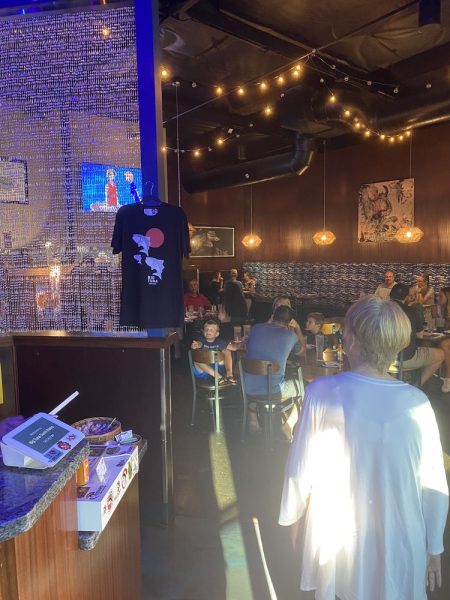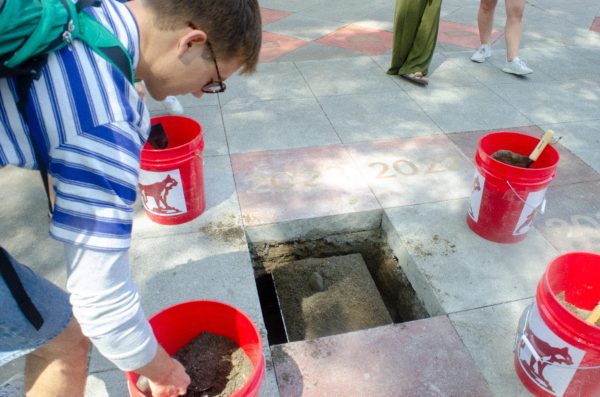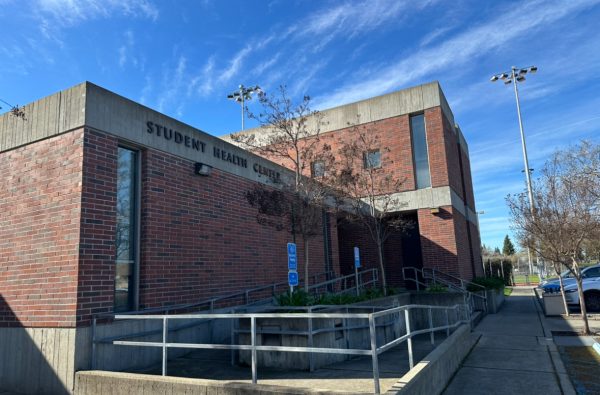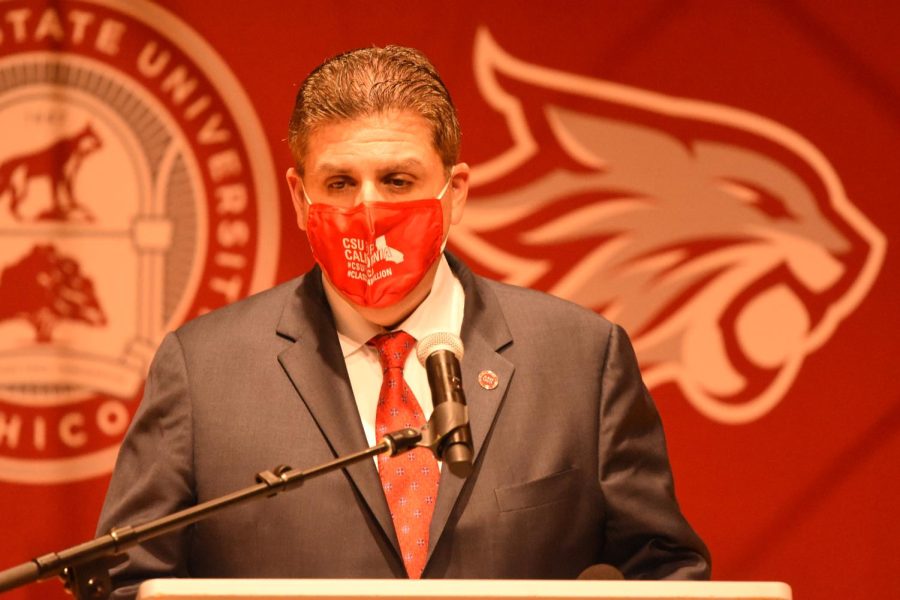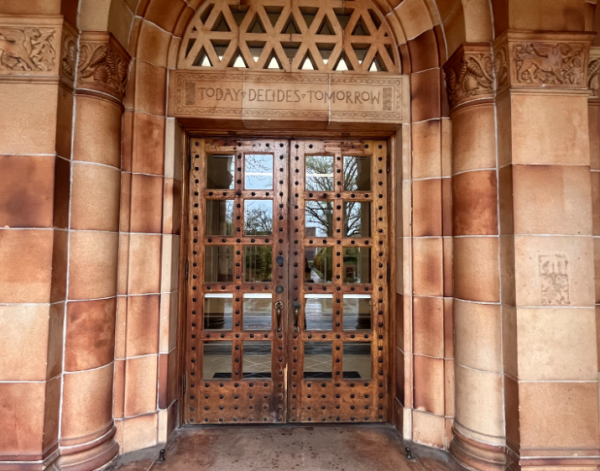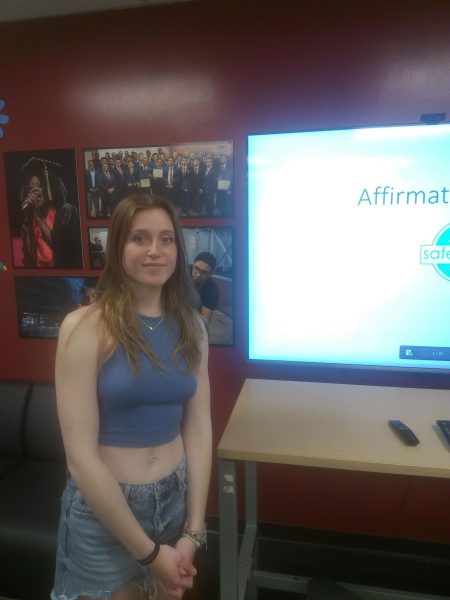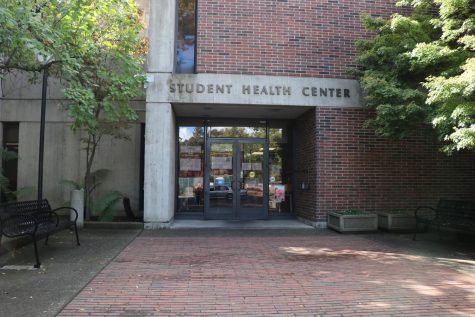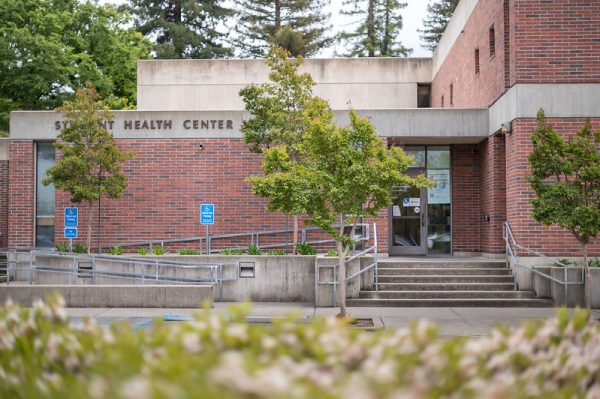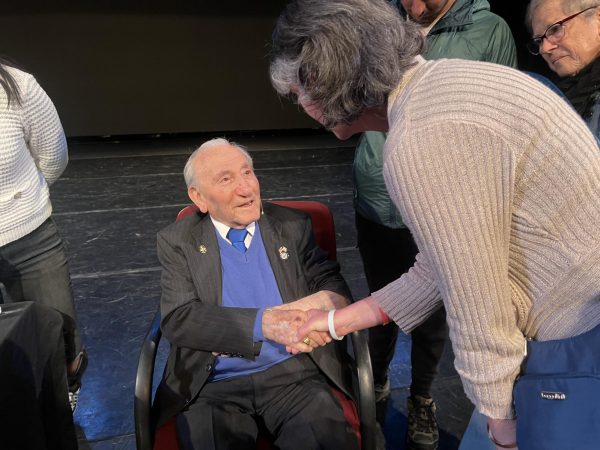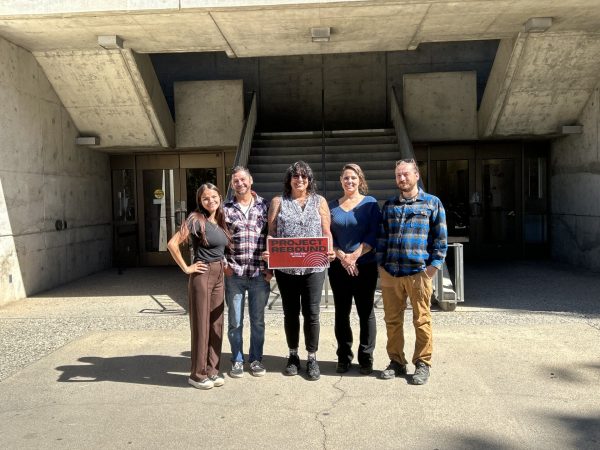Q&A: Chancellor discusses COVID-19 at Chico State, addresses enrollment decline and turns down tuition reimbursement
Chancellor Joseph Castro shared a press conference with local media on Nov. 2.
California State University Chancellor Joseph Castro shared a press conference with President Gayle Hutchinson for local media on Tuesday during his visit to the university.
Castro is currently serving as the CSU’s eighth chancellor after succeeding Chancellor, Timothy P. White.
*The following questions were introduced by the Orion staff and other journalists in attendance at Tuesday’s meeting.
Q: Some parents and students believe they’re still paying the same amount for tuition, but they’re not getting all the assets that they had before. How do we respond to those families?
Castro: With the pandemic, we’ve had to offer a mixture of in-person and virtual courses. Over time, the mix of those courses will change to serve our students and the quality will remain the same and even increase over time. So the value continues to be high for a CSU degree and the quality of instruction is high whether or not it’s virtual or in person. I believe that we’ve become a much more flexible institution for our students to serve those needs. And I hope our families will grow to appreciate that in the coming months and years.
Q: Will students be receiving a refund for tuition when classes were predominately online?
Castro: There were refunds for different kinds of fees last year, as you might know, for housing and in some cases parking. But in terms of tuition, there are no plans to refund tuition. Because of the pandemic we actually became the nation’s largest online university. And we’ve learned a lot and as President Hutchison said, we’re going to be transitioning here to a new place coming out of the pandemic. As chancellor, my hope is that it will actually be more flexible for our students. And so the mixture of in-person and virtual education will depend upon the local circumstances and will be decided by the president and provost and professors, all in terms of serving the students. I think that we’re going to continue to see some evolution of online education. The key is quality and making sure that we’re supporting all students. So I still believe even with the pandemic that we’ve provided the highest value education in the country with our tuition being among the lowest and our strong commitment to quality and serving our students from diverse backgrounds.
Q: Sixty-five percent of classes are in-person right now and you’re planning on increasing that number as we move forward. What’s it going to take to bring back all those classes?
President Gayle Hutchinson: If we see an upswing in the number of cases, again, working very closely with our county health departments, we may have to stabilize somehow. If we stay on course right now, then I can anticipate bringing more classes back. I think as we understand more about COVID-19 and all of the variants associated with it, as we take guidance from the chancellor, who’s taking guidance from scientists in the area, we’ll learn more and as we do, we can put in place those safe practices, then I think you can understand that we’ll be able to bring more people.
Q: Across the 23 campuses, the vaccine mandate was a hot topic. … What did it look like [at the system level] and why?
Castro: I certainly respect the differences of opinion around vaccines. However, I follow the science and our policy follows the science of it. We want to make sure that we protect the health and safety of everybody on our university campuses. And the wonderful thing about our policy is it’s resulted in a very high level of compliance — 95% and above. … I’m happy to see what’s happened here in terms of the relatively low number of cases and that’s been the situation on the other campuses as well, and it enabled us to repopulate that higher level so that we can move forward and support the success of our students.
Q: Chico State has seen a decline in enrollment for the past seven years, but specific to our campus, Chico State has seen situations such as the Oroville Dam crisis, the Camp Fire and the North Complex Fire last year. What is the Chancellor’s Office involvement or concern with our campus regarding those incidents?
Castro: We’re working with each of the campuses in Northern California that have experienced enrollment declines. From Humboldt down to San Francisco, we’ve seen different versions of declines, so I do think there’s something going on regionally around these natural disasters, but I think demographics also have something to do with the decline. But I am looking to the future in ways that we can create new partnerships with the K-12 system and with the community colleges to increase the number of transfer students. I think that by working together as one ecosystem, we’ll be able to see enrollments increase over time all across the CSU.
Hutchinson: With these natural disasters, we’re now studying fire and water with more sense of urgency. And through studying fire and water, we’re realizing that there’s a job opportunity. The North State Economic Collaborative is a collaboration with a number of counties and Chico State, and partners where we’re looking at ways that we can come together to find ways to create more jobs, to make sure that, as graduates graduate, they may be finding jobs in the region. And with the pandemic, one of the benefits is [that], as we expand our online opportunity, it creates access for more people, especially people in rural communities who may be able to then earn a degree.
Q: The CSU union is bargaining for a 4% raise in the general salary for faculty. Are you for or against that?
Castro: We’re currently in negotiations so I can’t speak about the details, but I’m cautiously optimistic that we can come to an agreement when we get together with a mediator in the coming days. I’m very eager to find common ground with them so that we can move forward supporting our talented and diverse students.
Q: What specific strategies are universities employing to address the gap between graduation rates for particularly students of color and low-income students?
Hutchinson: Once students are here, we’re working with our faculty and actually across all colleges, and three divisions to really understand where students are struggling … Additionally, we’ve increased our advising, we’ve added advisors and teach to the colleges, we have supplemental instruction and we’re looking at other ways that we can guide students so we greet them at the door and then we work and make sure that we have wraparound support for them as they make their way to graduation. This year, because it’s been such a stubborn challenge for us, and we want to make sure that we really reach those affected by the equity gap, we placed a laser focus on it this year. And I’m confident with the plans that we have in place that will begin to see improvements.
Kimberly Morales can be reached at [email protected] or on Twitter @kimberlymnews.
